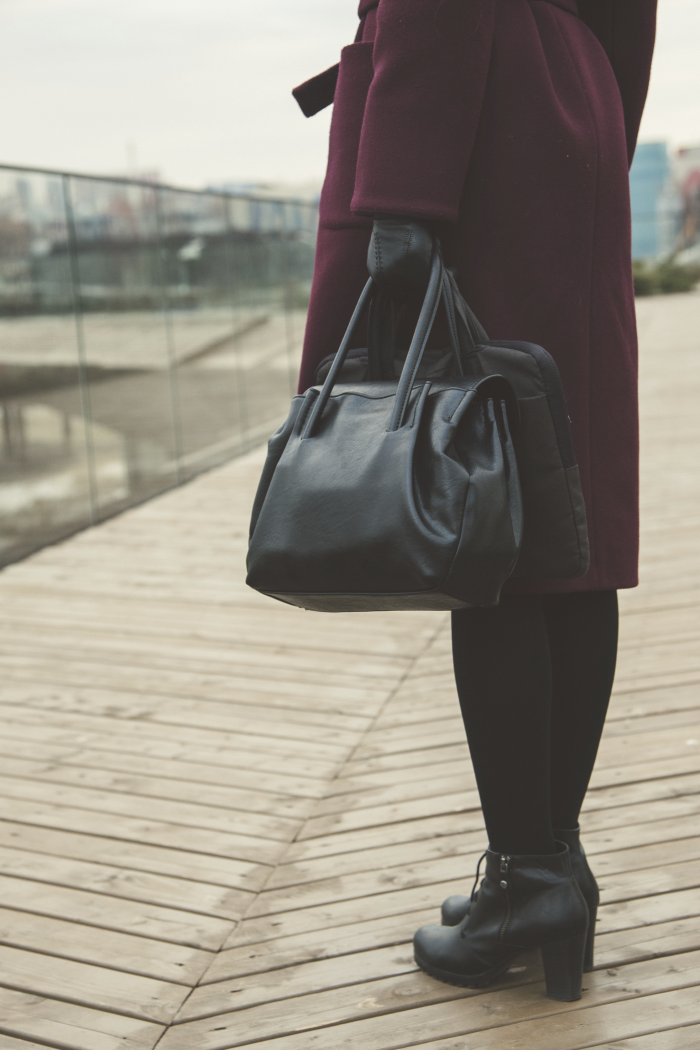When I experience these symptoms, I know I’m close to fainting. I suffer from inappropriate sinus tachycardia (IST), a type of cardiac arrhythmia and a form of dysautonomia. The “inappropriateness” means it can be activated out of nowhere. IST creates an excessive acceleration in heart rate with minimal exertion. Heart rate recovery can often be prolonged and for some, entire days are spent with a heart rate over 110 beats/minute.
Having dealt with tachycardia for several years, I’ve noticed a few triggers to its onset. For me, it occurs a lot more when exerting energy – walking, talking, when I’m under stress and during extreme weather changes. I’ve learned to deal with the daily palpitations, dyspnea, and dizziness but the unpredictability of traveling and being out in public has its own issues.
Most times I leave the house with my husband but there are days where I’ve had to venture out on my own for work and university. One particular time comes to mind. I was on the train to university. Five minutes after arriving at the station, my heart rate spiked at 180 beats/min, my mouth became numb, I was sweating profusely, feeling dizzy and my vision dimmed. Although I was surrounded by hundreds of commuters, I felt alone and completely helpless.
As I walked out of the station and on to a busy street, my disorientation grew as the sights and sounds became overwhelming. My legs felt weak, almost like they were going to buckle from underneath me. I was on the verge of tears.
I knew I needed help to make it to university and flagged down a taxi to take me the rest of the way.
It’s these exact situations that have left me terrified to leave the house.
What if I pass out and no one is around? What if no one can figure out how to contact my husband? Or what if I suffer a medical emergency and no one realises the extent? All of these thoughts go through your mind until you’re left thinking it’s just better to be safe and stay at home.
The truth is, you shouldn’t be afraid to leave your home – and in most cases, you don’t really have a choice. Dysautonomia can affect your quality of life. But the following techniques have helped me accomplish more, and have given me back the confidence to venture away from home on my own.
Before you leave home
- Plan ahead.
The day before I travel anywhere new, I look into transportation routes. How can I get to my destination in the shortest time possible, with minimal transportation changes (trains/buses) and which method will use the least amount of energy? If you plan to travel all week, ensure you’re not using all of your energy on the first day.
If possible, try not to do anything laborious the day prior and try to get adequate sleep the night before. - Pack wisely & lightly.
Make sure to remove anything unnecessary from your bag (old paperwork, receipts, switch coins to cash) and pack items that will help you manage symptoms. For those with low blood pressure, this should include water and snacks that contain sugar and/or salt. For nausea, pack ginger based candies.
You’ll want to make sure that you’re only bringing the necessities. Carrying around extra weight will only cause strain on your shoulders.
- Drink electrolytes.
Prepare for the strenuous physical activity and drink a glass of electrolytes. Dysautonomia can cause excessive perspiration, leading to a loss of fluid in the body and resulting in dehydration, dizziness, and palpitations. - Set up your iPhone medical data.
In case of an emergency, I have my medical ID set up on my iPhone. This provides medical information about me that may be important, like allergies, medical conditions, and my husband’s contact details. The app can be accessed without unlocking your iPhone.
Steps to set up your iPhone’s medical ID can be found here.
There are similar apps available for Android users, one is linked here.

- Dress appropriately.
Shield your eyes with UV protected sunglasses and a hat. Avoid tight clothing that will cause discomfort. Wear supportive shoes to avoid blistering and future injury. When your feet are unable to function properly, other parts of your body must overcompensate. This overcompensation can lead to pain in your heels, ankles, knees, hips and lower back.
Dysautonomia can cause weather sensitivity. Heat and cold intolerance and the potential consequences (often fatigue or pain) should be planned for. Overheating in Summer is common, therefore try to avoid locations that do not have adequate air conditioning. In Winter, be sure to pack a scarf and gloves, especially if you suffer from Raynaud’s or have sensitive hands and feet.
After you leave home
- Take adequate rests during your trip.
If there are seats available, be sure to take advantage of them. Just to catch your breath, lower your heart rate and find your bearings before moving on. Yes, this does make the trip a bit longer than expected but taking the time to rest during the trip ensures you’re not overtaxing your body. - Keep hydrated.
When you’re taking your rest, it’s the perfect time to keep hydrated and have one of your prepared salty/sweet snacks. - Keep someone updated.
If you’re starting to feel faint, contact someone. Let them know where you are at that moment, even if it’s a quick SMS. - Have a backup plan.
If you find yourself in a bit of trouble, try your best not to panic. Instead, revert to your prepared backup plan. In the case above, my backup plan was to catch a taxi the rest of the way. If possible, have a relative/friend pick you up, decide on a public transport route to get back home or catch a taxi to your destination.
I hope the following tips reduce some of your fears about traveling or being in public with dysautonomia. Traveling is often unavoidable and we can’t always guarantee we’ll have someone we know with us. I’ve found that preparation really makes a difference when I have to leave home on my own.
What are your best tips for dealing with dysautonomia when in public?







4 comments
I don’t know if I have that or not but I know I really hate going out of the house as long as my husband is with me I’m ok but to go ny my self I avoid as much as possible. I had a panic attack several years ago judt about gave up driving . I can go to places I’m used to go to but anything new on my own no . I hate it but its so late in my life dont guess it matters much. Have other reasons as well but they are even more embarrassing
Hi Kathy,
So sorry for the delayed response! Thank you for reaching out. I know exactly how you feel, I’ve also not liked going to new places. My husband spends a bit of time trying to convince me a new place will be fine to visit. I hope everything improves, especially with your panic attacks. Having had a few of them in the past, they are awful experiences. Please don’t ever be embarrassed about your reasons, here if you ever need to chat. Hugs xo
This is such a helpful post! I’ve recently been diagnosed with orthostatic hypotension and I read the same tips on every blog but yours are different which I really like! I’m definitely going to set up the medical ID on my iPhone and look for electrolyte drinks. Thanks! x
Hi Kirsten, I apologise for the late response. Thank you for leaving a comment! I’m glad you enjoyed the tips and hope they helped. The electrolyte drinks are an amazing help! Hugs xo